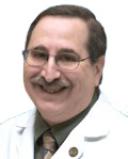Psychiatry
What’s Needed in Child/Adolescent and Geriatric Psychiatry
How do the numbers of professionals in these fields compare?
Posted May 16, 2024 Reviewed by Gary Drevitch
Key points
- The number of persons aged 65 years and over will soon exceed the number of people under 18.
- Many more people are training in child/adolescent psychiatry than in geriatric psychiatry.
- Geriatric psychiatrists should emphasize teaching general psychiatry residents to care for elderly patients.
This post was written by Eugene Rubin MD, PhD, and Charles Zorumski, MD.
The field of psychiatry is enjoying a growth spurt. In the 2024 national residency match, 2249 medical students elected to train in psychiatry. By comparison, only 853 students chose to train in psychiatry in the year 2000. That number gradually increased, to 1000 in 2007, 1540 in 2018, and 2030 in 2022, leading to this year's peak. This increased interest in psychiatry is encouraging, but there still will be a marked shortage of psychiatrists for the foreseeable future.
Psychiatry has five subspecialties. Two are child and adolescent psychiatry (CAP) and geriatric psychiatry (GP). How many psychiatry residents are entering these two subspecialties, and what do these numbers tell us about the delivery of care to young and older populations in the future?
Demographics
Approximately 22% of the U.S. population is younger than 18, and 17% is 65 and older. But these demographics are changing dramatically. Between 2016 and 2060, the number of people younger than 18 is projected to grow by only about 9% whereas those 65 and older will grow by over 92%. In about 10 years, more individuals will be 65 or older than will be younger than 18.
Numbers of Child/Aolescent and Geriatric Psychiatrists
Between 2017 and 2021, about 450 psychiatry residents entered CAP fellowships each year. This compares to about 50 residents per year entering GP fellowships. Currently, there are 9247 board-certified child and adolescent psychiatrists and 1429 board-certified geriatric psychiatrists in the U.S.
CAP is the most popular subspecialty in psychiatry. Nevertheless, there is a marked shortage of physicians board-certified in CAP. CAP fellowships require two years of training. There is also a dramatic shortage of geriatric psychiatrists, yet GP fellowship programs are not attracting many candidates. GP fellowships require one additional year of training.
There is some exposure to CAP lessons in general residency training, but the time devoted to this subspecialty is unlikely to prepare a general resident to provide effective care to very young individuals with complicated symptoms. General psychiatry residents may not be overly familiar with coordinating care with pediatricians, schools, and children’s hospitals. In addition, a variety of psychiatric and medical conditions are unique to the pediatric age group.
On the other hand, many of the skills necessary for treating elderly patients with complicated medical and psychiatric symptoms are extensions of skills broadly taught during various components of general psychiatry programs. General psychiatry residents gain experience working with elderly patients on several rotations, including internal medicine, neurology, and consultation-liaison psychiatry, as well as specific required geriatric psychiatry experiences. Intensive geriatric psychiatry training can occur during a one-year GP fellowship, but much of this experience involves illnesses and health care systems that general residents already have some familiarity with.
Utilizing the Physician Work Force to Maximize Care
What is the best way to maximize the current physician workforce in CAP and GP in view of the population's dramatically changing demographics?
Of the 9247 board-certified child and adolescent psychiatrists, a significant minority could devote themselves to training new fellows and general residents, and advancing the field through research. Most CAP specialists could provide direct patient care and, importantly, consult with and supervise other clinicians such as pediatricians, general psychiatrists, pediatric nurse practitioners, physician assistants, and social workers in providing psychiatric care. Although there is a shortage of board-certified child and adolescent psychiatrists, there are enough subspecialists to both supervise the training of general psychiatry residents and CAP fellows, and provide and supervise direct patient care outside of resident training programs.
On the other hand, the 1429 board-certified geriatric psychiatrists are too few to provide substantial and effective care to the rapidly expanding number of individuals who would benefit from their expertise. Rather, it might be most efficient for these experts to focus on providing instruction to general psychiatry residents to maximize their knowledge and experience so that they become more comfortable treating elderly patients. General psychiatrists then could provide direct care to older individuals as well as supervise other clinicians, including general practitioners, nurse practitioners, physician assistants, and clinical social workers, in collaborative care models.
For psychiatric expertise to reach the large number of patients with psychiatric disorders, collaborative care is becoming essential. As mentioned above, this approach is critically needed for treating very young and very old patients with psychiatric disorders, but it is also needed to care for patients of all ages. It is imperative that mechanisms for reasonable reimbursement to psychiatrists for their supervisory roles be developed for collaborative care to be successful. (We wrote about collaborative care models in an earlier post.)
It is unlikely that the number of subspecialists in CAP and GP will dramatically change over the next few decades. Therefore, it is important to utilize the current workforce in the most efficient manner so that the best care possible can be provided to both the very young and very old.
To find a therapist, visit the Psychology Today Therapy Directory.
References
American Psychiatric Association. (Nov 2023). 2022 Resident/Fellow Census. https://www.psychiatry.org/getmedia/d80438af-f760-40f3-9d33-f91309b0956…
American Board of Psychiatry and Neurology, Inc. Annual Report 2022. https://www.abpn.org/wp-content/uploads/2023/04/ABPN_2022_Annual_Report…




